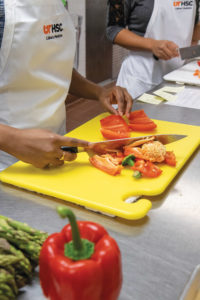By Peggy Reisser | Photos by Alan Burns
Medical students at the University of Tennessee Health Science Center are learning some of their most important lessons in the kitchen.

Susan Warner and a team of instructors, registered dietitians and faculty are teaching future physicians about the vital connection between what people eat and how they feel. It’s a recipe they hope will not only benefit students but also those they will treat in the future.
“We are trying to train the trainers, who can then become leaders for better health across Tennessee and practicing role models of healthier lifestyles themselves,” Warner says.
Warner has been teaching a culinary medicine course with Joan Han, UTHSC associate professor of pediatrics-endocrinology, to medical students at UTHSC since 2016, using the Health meets Food curriculum governed by the Culinary Medicine Specialist Board. What started with a few medical students in the UTHSC College of Medicine has grown and trained more than 80 students through the years.
The goal of the program is to raise nutrition and culinary skills for the personal health and well-being of the medical students and to equip them to communicate nutrition principles to their patients.
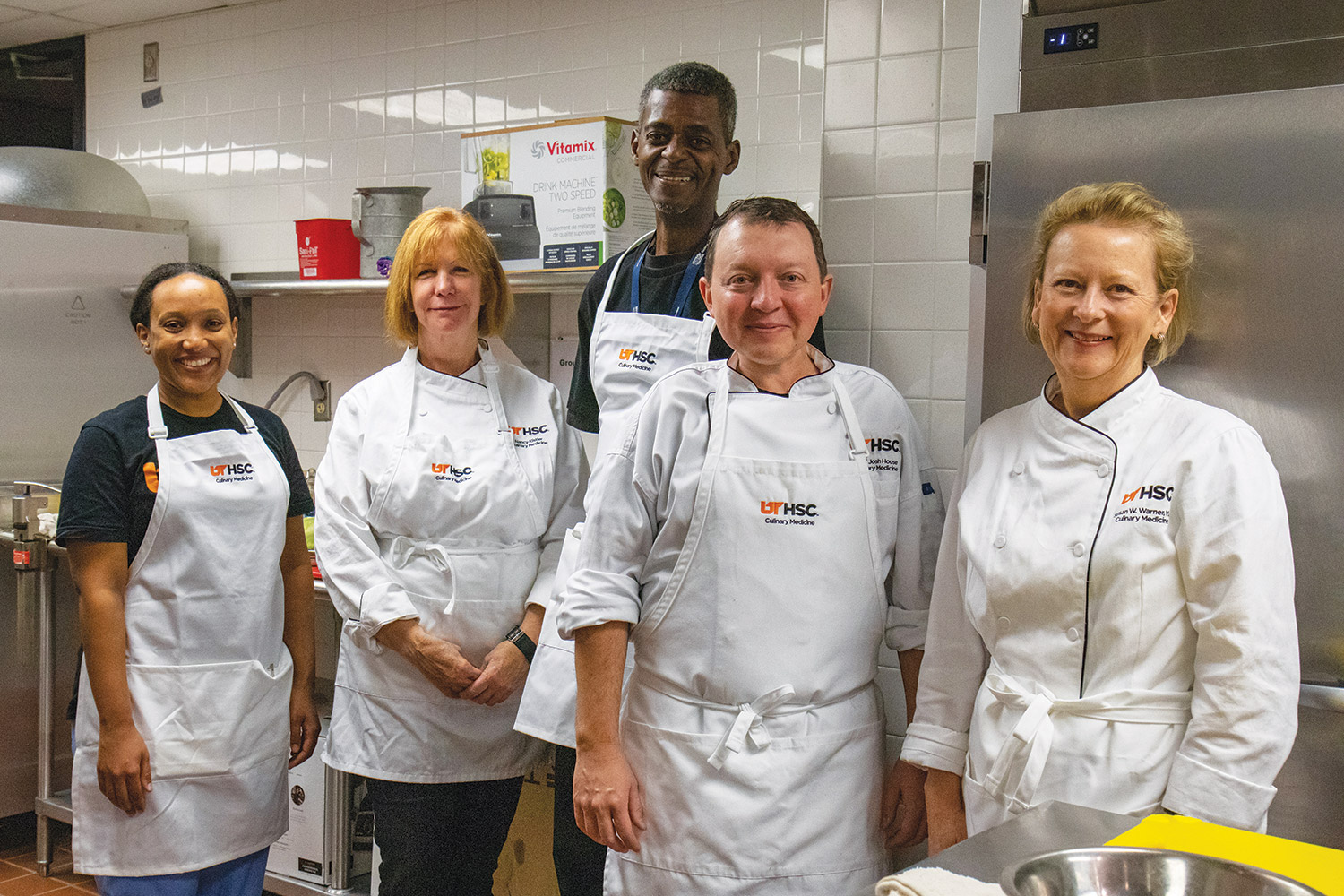
We Are What We Eat

Warner believes a good diet is a prescription for good health. For the past several years, she has been working to spread the “Food is Health and Medicine” mantra to the UTHSC campus community.
A clinical pathologist, she is so passionate about the link between food and health that she became a certified culinary medicine specialist and a professional chef.
“I recognized a long time ago the link between nutrition and its impact on chronic disease,” says Warner, a clinical assistant professor in the department of medical education in the UTHSC College of Medicine. “Hippocrates said, ‘Let food be thy medicine and medicine be thy food.’ It’s something that we’ve known for thousands of years, that diet and good health or bad health are linked. Food has the power to make us healthier or to make us sick.”
It wasn’t until a 2013 trip to Tulane University for her husband’s medical school reunion that Warner discovered the culinary medicine program there. She felt it was a perfect marriage of medicine, nutrition and culinary skills and offered a potential tool for the doctor’s bag. The program was originally developed at the Goldring Center for Culinary Medicine at Tulane University under the direction of Timothy Harlan.
Known as “Dr. Gourmet,” Harlan is a practicing, board-certified internist and currently an associate professor of medicine at George Washington University. He directs what is now the stand-alone, nonprofit Health meets Food program at George Washington University.
After Warner completed her own culinary medicine specialist certification, she was introduced to Han, who directs the UT-Le Bonheur Pediatric Obesity Program and the Healthy Lifestyle Clinic at Le Bonheur Children’s Hospital in Memphis. Han was interested in bringing the culinary medicine program to Memphis and obtained a license for UTHSC to use the program.

With three second-year medical students and Han’s team, Warner held the first series of eight classes in 2016 for 16 medical students in a donated kitchen in the Junior League of Memphis Community Resource Center. The students were so enthusiastic there was near-perfect attendance at all the classes. One student missed a class because he was undergoing surgery.
The following year, with some private funding, another teaching kitchen in the Memphis community was used to teach a second group of medical students, as well as a community series, in which the trained students and faculty taught community participants.
In 2018, the College of Medicine’s Department of Medical Education offered culinary medicine as an elective to fourth-year medical students. Classes have filled up quickly since, and there is usually a waiting list. They have been taught most recently in the Student-Alumni Center kitchen on the Memphis campus.
The National Academy of Sciences calls for medical students to have a minimum of 25 hours of nutrition education. Only 27 percent of medical schools in the United States meet this recommendation. UTHSC is one of them. The university is among approximately 50 medical schools across the country using the Health Meets Food curriculum. Students are held to academic standards and are equipped to volunteer in community programs that address health issues related to diet and food insecurity.
“What we’re trying to do with the medical students is more academic,” Warner says. “We’re trying to get them to take better care of themselves, but we are also trying to make them aware of evidence-based nutrition principles and how to talk to their patients.”
10 Tips for Healthy Eating
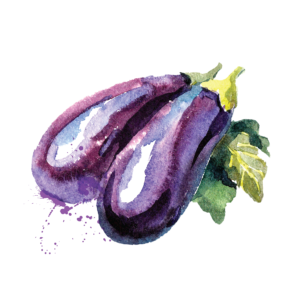
- Know the core nutrition principles: Eat more whole fruits and vegetables, whole grains and legumes. Consume healthy fats or unsaturated fats, primarily from plants or seafood. Saturated fats, primarily from animal sources, should be limited, and trans fats (foods like margarine, commercially prepared pastries and processed foods) kept to a minimum. Consume dairy in moderation. Limit added sugars, processed foods and salt.
- Visualize the plate: Half your plate is fruits and vegetables, and the other half is divided between a healthy protein (seafood, lean meat, poultry, legumes or eggs) and whole grains like brown rice, farro, quinoa, corn or whole-wheat products.
- Remember that small changes can make a big difference: Set a few goals that are meaningful to you and that you have the confidence to reach.
- Mindfulness is important: Ask, “Am I really hungry or just bored, thirsty or eating because food is present?”
- Portion control is key: Remember that we live in a supersized world of food in which what is called a normal portion has become equivalent to two to three servings.
- Read the food ingredients lists and nutrition labels. Limit saturated fats, added sugars and sodium.
- Take stock of your pantry: Make sure it is not filled with highly processed foods.
- Grocery shop with a plan: It is best to shop the perimeter of the store, where the freshest whole foods are located. An exception would be the aisle with whole grains and legumes.
- Choose less-processed food: Consume foods in a state closest to how they grow.
- Don’t look for a quick fix: The road to better health is a journey to be enjoyed.
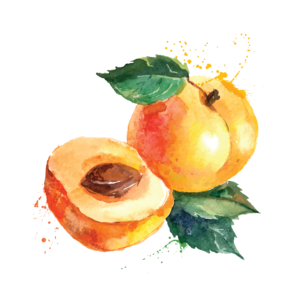
Good Health, One Dish at a Time
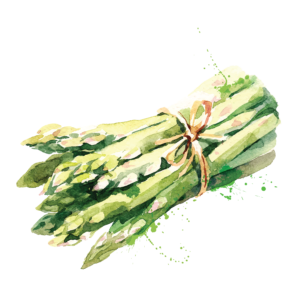
Each class includes three components: Pre-class work, including a video and article review with a quiz; cooking in groups; and a case review and exercise led by faculty, along with a nutritional discussion and tasting of the recipes.
“We try to take easy-to-find, budget-friendly ingredients we know people like and use them in delicious recipes with healthier substitutions,” Warner says. “The recipes in this course are based on a Mediterranean diet, which is a whole-food, plant-forward way of eating recommended in the 2015-2020 Dietary Guidelines for Americans.”
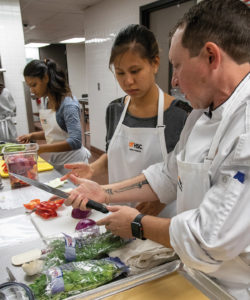
One class features spaghetti done four ways: a traditional version with meat; one with whole-wheat pasta, meat and a few vegetables; one with whole-wheat pasta, less meat and more vegetables, including mushrooms and lentils; and one with vegetables and no meat. Each version progressively illustrates a more healthful approach to the dish.
“Culinary medicine is a unique and incredible rotation,” says Alex Galloway, an internal medicine resident at Emory University who took the course at UTHSC in the fall of 2018. “We all know nutrition is important to health, but nowhere else in our education do we have time to actually learn about it. This rotation gives the opportunity to focus on the science of nutrition, communication with patients and the practical culinary skills of preparing healthy meals. I feel more confident talking to friends and family about how to interpret new diet fads and why a balanced diet still makes sense.”

Harlan, the program’s founder, has followed its growth at UTHSC.
“Dr. Warner has created one of the most successful culinary medicine programs in the country at the University of Tennessee Health Science Center,” he says. “The collaboration across multiple disciplines at the university, as well as with community programs in Memphis, is a model for medical schools everywhere.”

The program began casting a wider net with faculty and staff classes earlier this year with medical students who have completed the training assisting. The coronavirus pandemic necessitated moving the instruction online with classes being conducted via Zoom. The students prepared meals, discussed and enjoyed their dishes together remotely.
“I think this can make a difference,” Warner says. “Healthcare professionals need to take the lead, and UTHSC is the academic leader for training future health-care providers across the state. That’s why I’m passionate about it, and I think we can make a huge impact for better health for the community and Tennessee.”
Recipes from Health Meets Food
Ranch Dressing
This dressing can be used on salads or served as a dip with vegetables.

- ¾ cup yogurt, Greek, low-fat
- ¼ cup sour cream, low-fat
- ⅓ cup buttermilk
- 1 teaspoon apple cider vinegar
- ¾ teaspoon sugar
- 1 ½ teaspoons garlic powder
- 1 tablespoon parsley, dried
- 1 ½ tablespoons chives, dried
- 1 teaspoon onion powder
- ¼ teaspoon salt
Preparation:
- Gather all ingredients and equipment.
- In a large mixing bowl, combine all ingredients and mix well.
- Refrigerate until ready to use.
Oven Fried Chicken Tenders
A delicious and healthy alternative to traditional fried chicken. Storage instructions: Refrigerate and reheat in the oven. You can also freeze in a single layer on a cookie sheet and then transfer to a plastic storage bag to be ready to reheat for a quick snack.
- 1 cup breadcrumbs, whole wheat
- 3 tablespoons parmesan cheese, grated
- ¼ teaspoon garlic powder
- ¼ teaspoon thyme, dried
- ¼ teaspoon Kosher salt
- To taste black pepper, ground
- 2 large eggs, beaten
- 1 pound chicken breasts (about 2), boneless and skinless
- Pinch cayenne pepper (optional)
Preparation:
- Gather all ingredients and equipment. Preheat oven to 400°F (200°C).
- Mix bread crumbs with the parmesan, garlic powder, thyme, salt, pepper, and cayenne.
- Place eggs and bread crumb mixture in 2 separate shallow dishes.
- Pat chicken dry and cut each chicken breast into “thumb sized” pieces.
- Run the strips through the egg to coat it lightly and hold the chicken over the liquid to let any excess fall back into the bowl.
- Lay the strips in the bread crumbs, turn it over and press it into the breading to evenly coat. Shake excess crumbs off chicken.
- Place the chicken on a baking pan or baking rack and then place in oven. Bake for 10-15 minutes or until the internal temperature reaches 165°F (74°C).
Summer Quinoa Salad Lettuce Wraps with Lemon Shrimp

Quinoa:
- 2 teaspoons olive oil
- 2-3 each garlic, chopped
- ½ medium red onion, small dice
- 1 ¾ cups vegetable stock or water
- 1 each orange, zested and juiced
- 1 cup quinoa
- 1 cup chickpeas, drained, rinsed
- 1 each cucumber, washed, medium diced
- 1 medium tomato, medium diced
- 2 ounces feta cheese, crumbled
- 1 tablespoon dill, fresh, chopped
- ½ teaspoon Kosher salt
- To taste black pepper, ground
Shrimp:
- ¾ pound shrimp, raw,
- peeled, deveined
- ¼ teaspoon Kosher salt
- ⅛ teaspoon black pepper, ground
- 1 each lemon, zested and juiced
- 1 teaspoon olive oil
- 1 ounce dry white wine
For Serving:
- 2 heads bibb lettuce, washed
Preparation:
- Gather all ingredients and equipment.
- In a medium sized pot, heat over medium-high heat and add oil. Add the onion and garlic and sauté until onion becomes slightly translucent, about 1 minute.
- Add the vegetable stock or water and orange juice and bring to a boil. Once boiling, add quinoa, reduce heat and cover. Cook quinoa for about 15 minutes or until all of the liquid has been absorbed.
- Add chickpeas and place mixture into a medium bowl and set aside.
- Toss the peeled and deveined shrimp with lemon juice and zest, salt and pepper.
- In a medium-sized sauté pan, heat oil over medium high heat. Remove shrimp from marinade and add to pan. Cook, stirring occasionally, until shrimp is almost cooked through, about 3 minutes.
- Remove shrimp from pan, set aside. Deglaze pan by adding the white wine and scraping the bottom of pan and cook until most of the wine evaporates, about 2 minutes.
- In a small bowl, pour liquid over shrimp and set aside.
- Fluff the quinoa and chickpeas mixture with a fork. Toss in the cucumber, tomato, fresh herbs, orange zest, feta cheese, salt and pepper into a large bowl.
- Add the shrimp to the mixture and toss together.
- Use a leaf of lettuce to wrap 1 ounce of shrimp and ⅓ cup of quinoa. Repeat.
- Serve warm or cold.
Coconut Pecan Date Rolls
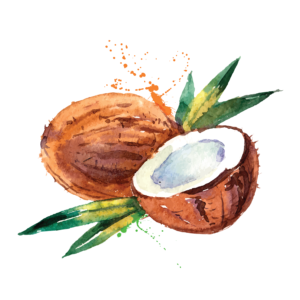
Storage instructions: Store in an airtight container for up to 1 week. These can also be frozen.
- 1 ¾ cups dates, pitted (about 14 each)
- ½ cup pecans, chopped
- ¾ cup coconut, shredded, unsweetened
Preparation:
- Gather all ingredients and equipment.
- In a food processor or blender, blend together dates, pecans, and half of the coconut until mixture forms a paste.
- Shape into 17 balls, about 1 tablespoon each, and roll in the remaining coconut.

